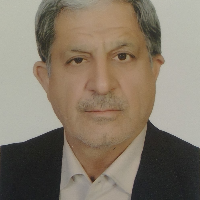Flood Risk Evaluation and Zoning using with AHP-Fuzzy Combined Model with Emphasis on Urban Safety (Case Study: Region 1 of Tehran Municipality)
Metropolitan areas are exposed to natural hazards for various reasons. These risks, which carry numerous life and financial damages, require urgent prevention and action. Flood is one of the major risks in the world and Iran. Tehran, as the capital of Iran and one of the largest population centers, is of great economic, social and political importance in its development, security and urban sustainability. Because of the risk factors and limitations arising from natural and geographical factors within the metropolis of Tehran, increasing human interference in the natural environment and leading to the occupation of hillsides and mountains are encroachment. In this descriptive-analytical study, flood hazard in region 1 of Tehran metropolitan was assessed.2. Study AreaRegion One of Tehran Municipality, with an area of 3604 hectares, is the northernmost district of Tehran, so that its northern border coincides with the northern border of Tehran (1800 meters high lines). This area is bordered on the west by Darkeh floodway- valley with region 2, on the south by Chamran, Modarres and Sadr highways with region 3 and on the southeast by Azgol highway with region 4 of Tehran municipality. The main land use in the study area is a residential and due to the presence of extra-regional and extra-urban uses, especially diplomatic and tourism uses is special importance and its population is constantly growing. This area has natural features such as rivers, valleys, hills and mountains which in various ways has caused lack of development and safety or in some cases led to development.
Flood hazard zoning is one of the spatial analyzes that has great impact on reducing the costs of setting up and running different activities and is therefore one of the most important and effective steps in executing projects. In order to implement a successful zoning, it is necessary to study all the effective factors at the level of the study area and provide appropriate zones in the form of output of the zoning process to managers and final decision makers so that these people are based on existing policies and priorities select the appropriate options for each result. In this research, the study and identification of factors affecting flood risk zones have been considered and ARC GIS as a powerful instrument in the management and analysis of spatial data is used. Then, while selecting and identifying appropriate criteria for flood risk assessment in region one of Tehran metropolitan for urban development and safety, a combination of Analytic hierarchy process (AHP) and fuzzy logic models was used.
The steps of these two models are as follows:1- Determining the criteria and sub-criteria for flood risk zoning in zone;
2. Evaluating the criteria and sub-criteria;
3- Creating Information Layers for Sub-Criteria;
4- Optimizing (standardizing or fuzzing) information layers based on fuzzy logic;
5- Applying the final weight to the criteria and mixing with the fuzzy layers;
6- Final zoning of flood risk in Tehran metropolitan area.
According to studies and studies on flooding, many factors are involved in flooding. According to experts in this area, and considering the characteristics of a Tehran municipality area, the most important factors that contribute to flooding in this area include land use, slope, elevation, distance from drainage network and geology (lithology). The final weight of each of the effective elements in flood risk zoning in a Tehran city was identified by using of Analytic hierarchy process (AHP) using pairwise comparisons and its analysis by Expert Choice software.
Tehran as a metropolis and capital of Iran, with a population of about 12 million, exposed to high altitudes and the presence of numerous rivers and valleys (Kan, Farahzad, Darakeh, Darband, Valenak, Golabad and Darabad), and relatively high rainfall, and Human Interventions (Invasion and invasion of Rivers ents. Increased asphalt and impermeable levels of the city, converting natural basins into integrated basins, affecting and prone to the occurrence of floods (previous flood events). Including the flood of 1987 Golobradeh and Tajrish and flooding of Tehran subway due to the late April 2012, in case of such danger, causing huge financial damage, flooding the streets and passages, creating traffic can be a national catastrophe, leading to chaos and weakening security and development in Tehran's metropolitan area and consequently the area. To help the welfare and security of citizens and to prevent insecurity and chaos after such a risk requires the use of a systemic (basin-based) approach and a distance from the confines of the mosque and the use of various experts, and it is among geomorphologists.As shown in Figure (9), the flood risk zoning map shows that the high- and high-risk areas that cover 50% of the study area are most consistent with the urban area of Area One and the corresponding regions. Drainage networks and outlets are the dominant catchment areas of Area One. But the lower risk areas are more in line with the northern and central parts of the range and areas of vegetation, and generally, the higher we move upstream and north of the basins downstream and south of the catchments, the greater the risk of flooding.
Metropolis of Tehran is the capital and largest core demographic of our countries, have a more importance of economic, political and social, that development, safety and stability urban of its need to more attention. Research Method is analytical - descriptive and library studies and field studies using GIS software and Expert Choice with (AHP-FUZZY) combined model led to mapping zonation of flood risk in the Region1 of Tehran metropolis is prepared. The aim of this study is identifying risk flood zones and its impact on urban safety of Region1 of Tehran metropolitan. The results show that risk map zones of low, low and moderate in the north and center of the study area and much and very much risk zones, of which includes about 50 percent are located in the area, adopts the output of basin and metropolitan area. With consideration of final flood risk map zonation in order to development and safety urban should be prevent of constructions in much and very much areas of flood risk and streams margin and several stream-valleys in Region1 of Tehran.
- حق عضویت دریافتی صرف حمایت از نشریات عضو و نگهداری، تکمیل و توسعه مگیران میشود.
- پرداخت حق اشتراک و دانلود مقالات اجازه بازنشر آن در سایر رسانههای چاپی و دیجیتال را به کاربر نمیدهد.




